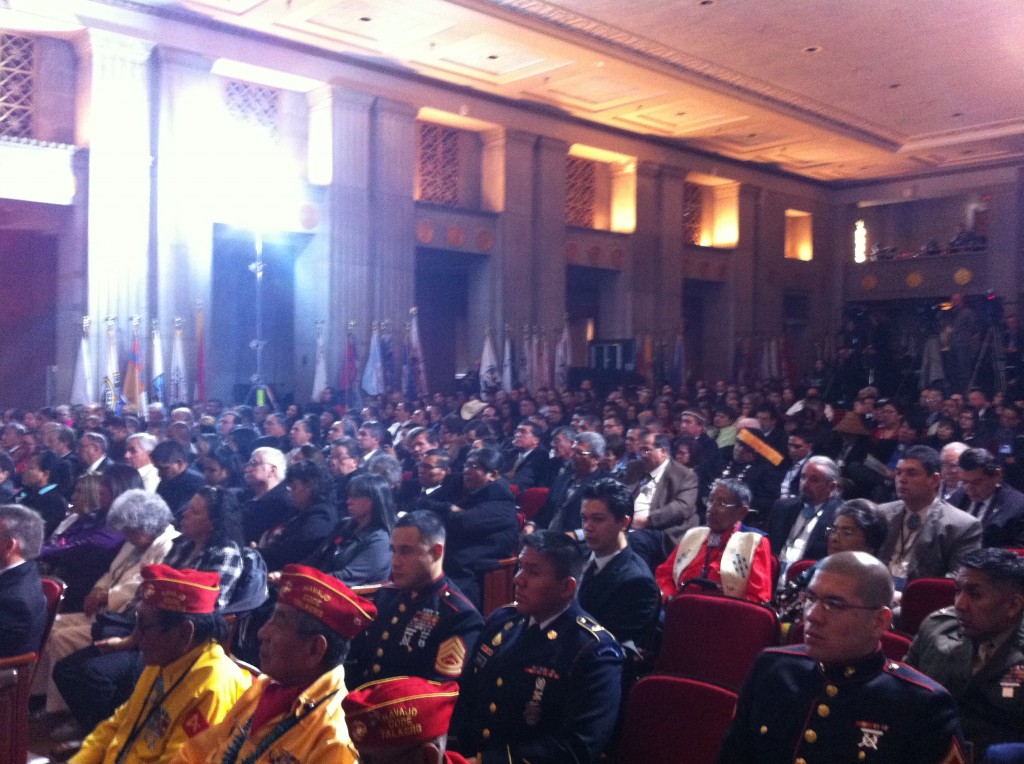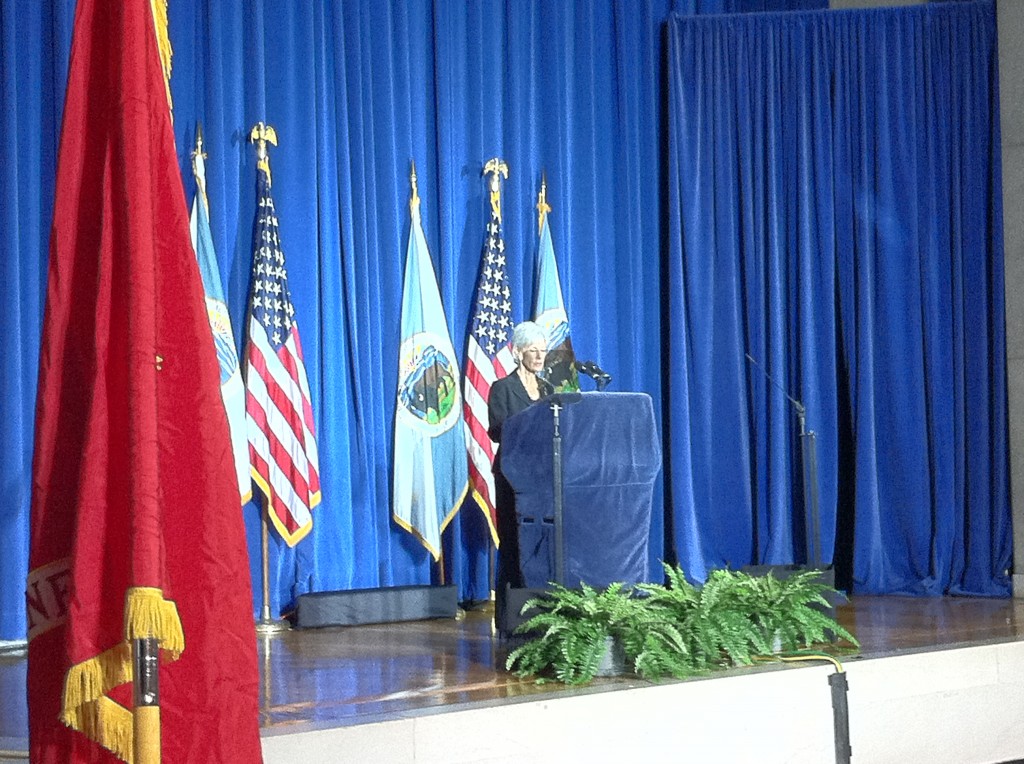

For the third time in as many years, tribal leaders are gathered in Washington for a summit with the White House.
President Obama told the hundreds of Native leaders at the Department of the Interior auditorium today (Friday) that his administration will improve educational opportunities in their communities.
And even as we meet this moment we have to prepare the next generation for the future. This is why earlier today I signed an executive order to launch the White House initiative on American Indian and Alaska Native education.
Its goals include boosting the number of Native children who enter school ready to learn, improving teachers’ skills, curbing the dropout rate, and increasing college access and completion. It also recognizes the value of learning Native languages, cultures and histories. However the executive order doesn’t come with money attached… it says funding the plans is “subject to the availability of appropriations.”
As officials talk about money in the budget for tribes, it’s a list of dreams – the budget is languishing in Congress along with the President’s legislative priorities.
Despite that, education is one of the top areas being touted as goal of the Obama Administration moving forward. Cabinet Secretaries who addressed the tribal leaders today (Friday) also pledged improvements in housing, health care, and job training.
Many of today’s (Friday’s) speeches had a ring of campaign stumping. The White House is trying to point out what it’s done and lay out a future agenda as it looks forward to next year’s election.
President Obama ended his comments by saying he believes this time period will be remembered as a turning point, when Washington and tribes worked together to build a “strong middle class in Indian Country.”
When you go back home making communities better places to live, I want you to know you have a partner in Washington. You have an administration that understands the challenges you face. And most importantly you’ve got a president that’s got your back.
The President also gave one Alaskan a shout-out: Teressa Baldwin, a teenager who goes to Mt Edgecumbe in Sitka and is working to prevent suicides. She and other teen leaders met the President back stage.
Fewer Alaskans are attending this tribal summit than did in the previous two years because it was scheduled too close to this week’s Bureau of Indian Affairs Providers Conference in Anchorage.
Knik Tribal Council Vice President Mike Tucker of Wasilla says he’s come with open ears – and hopes the Obama Administration listens to what he had to say as well.
Change is a very slow process, and sometimes very frustrating. It takes a lot of patience to wait and to actually see change happen. I don’t think there’s any other way for it to happen. It can’t happen overnight. It’s going to take cooperation and work, hard work on everyone’s part. But Chickaloon Village Traditional Council Tribal Chief Gary Harrison, is frustrated. He says while today’s break-out sessions with White House officials create some dialog, he wants to sit down with the President directly in acknowledgement of the government-to-government relationship the U.S. has with tribes:
He should meet with the tribes more directly that what he is. The last time he met with regional leaders, the leader… I like the leader that came from Alaska, I don’t want to get that wrong. But he was for a corporation, and I think he needs to meet with the true tribal leadership.
The tension between some tribal leaders and Alaska Native corporations is evident in conversations at today’s (Friday’s) summit… the Obama Administration is changing national policy to give Native corporations consultation rights. Some traditional chiefs like Gary Harrison say there’s a difference between how a tribal government and a company should be treated. Corporation leaders say they represent Alaska Natives too, and should have a seat at the table.
lcasey (at) alaskapublic (dot) org | About Libby




